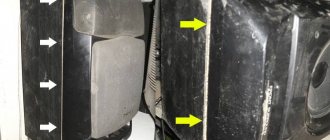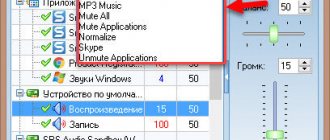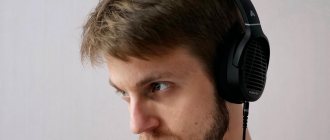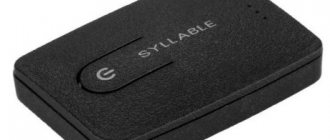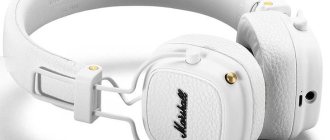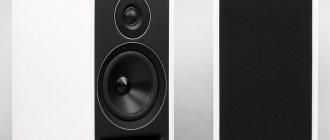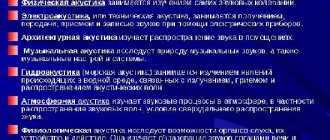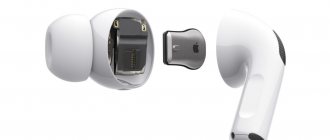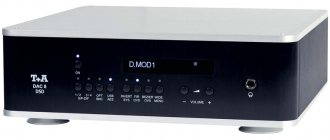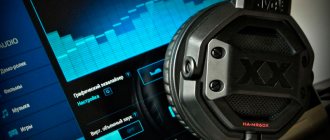General information
We live in an ocean of ultrasounds that we cannot hear. The rustle of grass under our feet, the rustle of pebbles rolled by the sea surf, the silent signals of bats and even the annoying squeak of mosquitoes - all these sounds have an ultrasonic component. Humanity became familiar with ultrasound long before it was recognized as a phenomenon, having mastered fire. The crackling of branches in a fire, the hissing of released substances and water under the influence of high temperature from firewood - all this generates ultrasound. In general, any pulsed sounds contain an ultrasonic component.
A whistle is also good because dogs can hear it at a much greater distance than the strongest cry.
Even before the beginning of written history, people used methods of training domesticated animals (dogs and horses) using an ultrasonic whistle, the invention of which is sometimes undeservedly attributed to the remarkable English scientist, doctor and inventor F. Galton. But we must also give Galton his due - it was his design of the whistle that turned out to be extremely successful, and circus performers from different countries since the century before last have consistently successfully presented dogs - “mathematicians” and horses - “scientists” to the unenlightened public.
Nowadays, sounds on the other side of the audio spectrum (meaning only ultrasound) have already given us powerful methods of non-destructive testing of materials. Doctors received new methods for diagnosing diseases and new tools, in particular, ultrasound diagnostics, which allows one to observe biological processes in real time, including the development of the human fetus, as well as the ability to perform bloodless operations using ultrasonic scalpels that cut tissue due to vibration at a frequency 55 kHz.
Modern engineers have methods for melting and welding materials with ultrasound, creating homogeneous mixtures from seemingly incompatible materials, and synthesizing previously unimaginable drugs and materials of the future. There are methods of ultrasonic cavitation and ultrasonic sterilization, and there is even the phenomenon of ultrasonic levitation. Let one remain a method for cleaning products from contaminants or their disintegration, the other a high-tech method for processing medical equipment and instruments, and the third for now remains simply an entertaining physical experience.
Results of acoustic modeling in EASE
Based on the calculated acoustic properties of the room, the EASE program allows you to generate reverberation time graphs both with and without taking into account the acoustic treatment of the room.
Reverberation time of a concert hall without acoustic treatment.
Reverberation time of a concert hall with acoustic treatment.
As can be seen from the graphs, the use of special acoustic materials can significantly reduce the reverberation time and level out the unevenness of its values. Thus, the room is deprived of excessive boom at low frequencies, and the intelligibility of speech and music increases. At the same time, too short a reverberation time negatively affects the volume of sounds and the spatial characteristics of the room. Therefore, it is important to understand what sound each specific room should have, so that the necessary compromises can be found in its acoustic treatment.
The main results of the acoustic calculation of a concert hall in the EASE program are presented in graphical form.
| Distribution of acoustic pressure levels of direct sound Direct SPL. | Distribution of acoustic pressure levels of total sound Total SPL. |
| Speech intelligibility coefficient Rasti. | Alcons vowel loss rate. |
| Musical clarity coefficient C80. | Speech clarity coefficient C50. |
As can be seen from the graphs, the acoustic parameters of the concert hall obtained as a result of modeling meet the requirements for them. The unevenness of the Direct SPL and Total SPL signal levels does not exceed 9 and 5 dB, respectively, the speech intelligibility coefficient Rasti has values from 0.69 to 0.75, the consonant loss coefficient Alcons is 4-5%, the values of the coefficients of musical (C80) and speech clarity (C50) are within 9...12 and 6...11 dB, respectively. For these acoustic parameters, these are excellent indicators.
Excellent results were achieved by simulating the acoustic treatment of the room, aimed at reducing unwanted reflections. However, it is important to remember that this, in turn, entails a deterioration in the unevenness of the sound signal level in the room, negatively affects the sense of volume, and often interferes with an adequate perception of the spatial picture of the room. In this regard, the acoustic design of a room is always a search for a compromise, which is carried out, first of all, based on the acoustic requirements of a particular room.
Historical reference
From left to right: Peter Lebedev, Pierre Curie, Jacques Curie, Paul Langevin, Felix Savard, Francis Galton
The study of sounds in the ultrasonic range and associated physical phenomena began most rapidly with the development of electrical engineering, radio engineering, electronics and materials science.
Display of an echo sounder - a specialized sonar (right)
Of course, the research itself would be impossible without the generation of ultrasound itself. Although ultrasound is often present in the playing of high notes in the form of overtones in many musical instruments, the first step towards the scientific study of ultrasound was made in the early 19th century by the French scientist Felix Savard, who defined the range of audible sound. Savard studied the range of audible sound using a gear wheel with a tachometer mounted on its axis, which was used to measure the frequency of the sound that was produced when a cardboard card was pressed against the teeth.
The English scientist Francis Galton in 1876 invented the design of an ultrasonic whistle, which has found very wide application both in scientific research and in technology. Subsequently, ultrasound research was carried out by various groups of scientists from different countries, including the Russian experimental physicist P. N. Lebedev and colleagues, who studied the generation and propagation of ultrasonic vibrations in the air.
From left to right: William Shockley, Walter Brattain, John Bardeen, Lee de Forest, Edwin Armstrong
1. General purpose silicon power transistor 2N3055, produced since the early 60s. last century 2. Transistor 2N3055 with the cover removed 3. Enlarged image of the crystal of the transistor 2N3055
With the advent of a new class of weapons in the form of submarines during World War I, military engineers faced the urgent task of detecting them. British scientists have created passive devices for detecting underwater objects - hydrophones. At the same time, the French engineer Paul Langevin, together with the Russian emigrant scientist Konstantin Shilovsky, worked on the creation of an active acoustic device for detecting submarines underwater. Nowadays they are called sonars or sonars. To generate ultrasound, Langevin and Shilovsky used devices based on both the electrostatic (capacitor type) and piezoelectric principles (quartz crystal). However, working sonars appeared only in the 20s. last century, after the end of the First World War.
A turning point in the research and generation of ultrasound was the invention of electronic amplifiers using a three-electrode triode tube, invented in 1906 by the American engineer Lee de Forest. In 1912, another American engineer Edwin Armstrong, and independently in 1913, the Austrian engineer Alexander Meissner created the first self-oscillator based on a triode.
A real breakthrough in the use of ultrasound was the invention of the point-point transistor in 1947 by a group of American scientists. In 1956, John Bardeen, Walter Brattain and William Shockley were awarded the Nobel Prize in Physics for their discovery of the transistor effect. Based on transistors, and then on integrated circuits, more advanced and economical low-frequency range amplification and generation circuits were created. The culmination of this process can be considered the development of digital methods for the analysis and synthesis of ultrasound of any conceivable range and power, up to lethal power, with the help of modern computer technologies, to which even sound visualization methods are amenable.
As sonar technology improved, echo sounders became available in civilian activities and are now successfully used in such important matters as navigation, scientific research on cartography of the seabed and in industrial fishing.
Today, this technique has become available to the general public - the most advanced fans of sport fishing, armed with portable echo sounders with GPS navigation, often with their catches arouse the envy of other amateur fishermen, who sit for hours on the shore in the hope of catching at least some fish.
Basic parameters for assessing the acoustic properties of a room
The main parameters that determine the acoustic properties of a room are: reverberation time, direct sound acoustic pressure level, general sound acoustic pressure level, Rasti speech intelligibility coefficient, Alcons consonant loss coefficient, C80 musical clarity coefficient and C50 speech clarity coefficient.
Reverberation time is a parameter that determines the rate of attenuation of the main and reflected acoustic vibrations in a room. In fact, this is the time during which the reflected sound weakens to a certain level relative to the level of the direct sound. The optimal reverberation time depends on the nature of the music or speech heard in the room, and is determined primarily by its purpose. For example, for speech to sound clearly, the reverberation time must be fairly small. At the same time, too short a reverberation time can negatively affect the timbre coloring and volume of sounds, and in the case of loud dynamic music it should be much longer. Reverberation time depends mainly on the shape and size of the room, as well as on the absorbing properties of its surfaces. It is also affected by the occupancy of the hall with listeners and any objects located in the hall.
Direct sound level - the volume of the sound source without taking into account the reverberation component. The direct sound level is determined only by the sound reinforcement system, which must ensure uniform coverage of the entire viewing area with direct sound. Direct sound coverage is considered acceptable if its level unevenness does not exceed 10 dB in the viewing area.
Overall sound level - the volume of the sound source taking into account the reverberation of the room. The overall sound should cover the entire viewing area without any dips. The volume of the overall sound is determined primarily by direct sound, which is enhanced by the reverberation component. In this case, the requirements for the unevenness of the overall sound are higher than for the unevenness of the direct sound, and it should not exceed 6 dB.
Rasti Speech Intelligibility Index is a rapid index of speech transmission. It is a simplified version of the speech transmission index (STI). The index is calculated based on a family of frequency-contrast characteristics curves and contains information about the nature of signal distortion in the room. Legibility is considered sufficient if the coefficient exceeds 0.6.
Alcons Consonant Loss Rate is an estimate of consonant articulation loss. Consonants have a stronger effect on speech intelligibility than vowels. Therefore, if the consonants sound clearly, then the speech as a whole is understood much better. The Alcons coefficient should not exceed 10% for acceptable speech intelligibility.
Musical (C80) and speech clarity (C50) coefficients determine the intelligibility of individual sounds in the overall musical stream. These parameters depend not only on the acoustic characteristics of the room, since individual reproduced sounds can be emphasized in hardware, due to the capabilities of a professional sound reinforcement system. However, assessing musical and speech clarity is important since not all musical events are performed using special effects. A striking example of this are chamber concerts.
Ultrasound. Definition and physics of phenomena
Ultrasound refers to sounds with frequencies higher than those perceived by human hearing. Usually, vibrations with a frequency above 20 kHz are considered ultrasound; the upper limit of ultrasound is conventionally taken to be 1000 MHz or 1 GHz. In Russian-language technical literature, sound with a frequency above 1 GHz is usually called hypersound.
When propagating in various environments, ultrasound generally obeys the laws of acoustics, that is, it is capable of attenuation, reflection, focusing and refraction. But there are some differences:
- Modulated ultrasound, for human perception through vibrations of the body surface, must have a higher vibration amplitude compared to an audio signal.
- Ultrasound is absorbed by the atmosphere and gases much more strongly than ordinary sound.
- Due to the short wavelength, ultrasound is more likely than ordinary sound to exhibit focusing, especially in the high-frequency part of the range.
Ultrasound propagates well in denser media such as water and other liquids, as well as in solids. In nature, ultrasound occurs under the influence of wind, with the rustling of dry fallen leaves underfoot and the rustling of pebbles rolled by the sea surf, the cracking of dry branches and the splitting of tree bark under the influence of frost. The sound of rain and waterfalls, thunderstorms and forest fires also produce ultrasound. In addition, natural ultrasound is generated by many representatives of the animal world.
Preparation
I rely on hearing. My entire setup was chosen in accordance with it, and I also used my hearing when choosing a place for the speakers in my room. By and large, the position of the speaker that I settled on suited me quite well.
From time to time, when I wanted to get something specific from the sound, I directed the speakers of the bookshelf speakers towards me - the vocals became clearer and clearer, with more obvious positioning. But at the same time the stereo scale is somewhat lost. When you want that same scale, the speakers look straight ahead - and then the stage takes on larger outlines, stereo surrounds, but the positions of instruments and vocals are not so precisely localized.
“The devil is in the details,” gentlemen. Who else, if not lovers of high-quality sound, is most suitable for this expression? It was these little things that periodically pushed me to search for the “golden mean”, and ultimately led to the “golden ratio”.
It would be a good idea to introduce the reader to my listening room. The room is no different from many others that fellow music lovers have adapted as their home. I will indicate its parameters in the diagram below:
I did not graduate from engineering institutes, so the scale was transferred, as they say, “by eye.” On the left is the entrance door. Along the long walls: on top there is furniture, which is popularly called a “wall”. It is dotted with niches and has no lockable cabinets. Below is a sofa from the Acoustic Absorber 2000 collection. There is a carpet on the floor - there was a discount on it when purchasing an absorber.
In the lower right corner there is a wardrobe, damn it. In the upper right corner is a computer desk. There are no complaints about it, let it stand for itself. Behind the table, along a short wall, there is an exit to the loggia, which, if necessary, can be closed with heavy “blackout” curtains. Well, a couple of nuances that I did not reflect on the diagram: the height of the stretch ceiling is 3.5 meters; The walls are covered with thick wallpaper with a fine texture, like fabric, and then painted.
I placed the speakers on the stands like this:
With this arrangement, the distance from the bass reflex to the wall is approximately 45 centimeters. As you can see, an almost regular triangle has formed between the listener and the speaker. Moving the left column closer to the door is dangerous - the door opens into the room. It is clear what trouble can happen to the one who opens it.
Ultrasound in the animal world
Cicadas can hear and emit ultrasonic vibrations
Biologists have established an indisputable fact that many different animal species use ultrasound for echolocation and navigation. Almost all toothed whales and dolphins are capable of generating and perceiving ultrasound for the purposes of spatial orientation, searching for and driving prey, and for communication. This especially applies to the blind white river dolphins - inias - that live in the muddy waters of the Amazon and its tributaries. Cats, horses and dogs tamed by humans also perceive ultrasound very well, and the same applies to their wild relatives. Ultrasound is used very masterfully by night hunters of flying insects - bats. They have such a sophisticated apparatus for generating and receiving ultrasound in the range from 14 to more than 100 kHz that they are able to avoid obstacles in flight in absolute darkness and accurately localize their prey, including small mosquitoes and mosquitoes. However, some types of insects are not so defenseless against them. Having excellent hearing in this wavelength range, night flying insects, when irradiated with an ultrasonic signal from a bat, abruptly change their flight direction, and some species even have counter-weapons. The tiger moth, for example, itself responds by generating ultrasound with approximately the same characteristics, thereby playing the role of a jammer for the echolocation system of bats.
But the most terrifying use of ultrasound is in certain types of crustaceans—shrimps of the species Alpheus randalli, otherwise called click shrimp or click crayfish. They slam their claws at such a speed that they cause cavitation in the aquatic environment, generating ultrasound of such strength and power that it is sufficient to stun their prey in the form of small fish, shrimp and other sea inhabitants. Ultrasound paralyzes and sometimes even kills them. The clicks when the claw slams shut are also used by shrimp for communication with each other.
Fortunately, this method of using ultrasound is limited to this species; other animal species, such as insects, use it for communication. Suffice it to recall the chirping of grasshoppers and crickets on summer evenings, which occurs when the bristles on their hind legs rub, as well as the singing cicadas, which make sounds using specialized timbal organs.
Difficulties in designing professional audio systems
Ensuring a high-quality and uniform acoustic picture when installing a professional sound reinforcement system often becomes an extremely difficult task.
This is especially true for concert halls and stadiums, where the distinctness and clarity of reproduced sounds is the most important condition for the successful holding of musical events. The acoustic picture of a hall depends on many different factors: the shape and size of the room, the sound reinforcement system, the materials used in the construction of the hall, the nature of the music or speech being played, and how crowded the hall is with listeners. For premises for various purposes, it is necessary to provide individual acoustic conditions, taking into account the architectural features of buildings, limited choice of location for installing acoustic systems, and the specific features of each room. Taking into account all these factors without special computer modeling is an almost impossible task. Moreover, without the use of specialized programs it is impossible to calculate the necessary parameters with sufficient accuracy.
Many software packages have been developed to simulate the acoustic picture of a room. One of the most successful products in this area is the EASE program.
Technogenic ultrasound
Since mastering the next after frying, but first in importance, process of preparing food using boiling, humanity has unwittingly begun to generate ultrasound on a massive scale. The fact is that at the moment water boils, many small bubbles of water vapor appear in its volume, which, collapsing, generate ultrasound. We can observe this phenomenon in everyday life, when we turn on an electric coffee pot or place a kettle of water on a gas stove for boiling - the initial noise of boiling water becomes quieter before the moment of actual boiling, since the noise shifts to the ultrasonic part of the acoustic spectrum.
The purposeful production of ultrasound for a variety of technical applications began at the end of the 19th century. In this case, various generation methods are used: mechanical and electroacoustic. The mechanical method uses flows of media interrupted in one way or another. A typical device of this kind is an ultrasonic siren, which is a chamber with a stationary stator with holes for the passage of the corresponding gas or liquid medium, and a rotor rotating at a certain frequency, also having the same holes. At the moment the holes of the stator and rotor coincide, the flow breaks through, and ultrasound is generated. The radiation power of such devices can reach tens of kilowatts of acoustic power.
Ultrasonic whistles have a simpler design, which are similar to the ordinary sound whistles we are familiar with from childhood. In them, ultrasound occurs when a circular air flow passes into a cylindrical resonating chamber. The length of the chamber is variable, allowing frequencies up to 50 kHz. The simplicity of the design and the resulting high reliability and efficiency are captivating.
Magnetostrictive effect and ultrasonic vibration are used in this acoustomagnetic anti-theft system label. It contains two thin, freely moving ferromagnetic alloy plates and an attached weak permanent magnet. The dimensions of the plates are selected in such a way that when passing past the transmitting and receiving coils at the entrance to the store, the plates vibrate at their own resonance frequency (approximately 58 kHz) and continue to vibrate after the end of the pulse, thus increasing the vibrations in the receiving coil, which is detected by the receiver of the control system . It is not clear how to prevent those who want to steal the product from removing this label.
When using the electroacoustic method of generating ultrasound, magnetostrictive, electrostrictive and inverse piezoelectric effects inherent in various materials are used.
The essence of the magnetostriction effect
consists in changing the geometric dimensions of ferromagnetic materials under the influence of changes in the magnitude of the magnetic field in it. It should be noted that in order to obtain a more accurate correspondence of the law of dimensional change to the applied magnetic field, it is necessary to use ferromagnetic materials with a small hysteresis loop and apply a constant magnetic bias field to them. Otherwise, the ultrasonic acoustic signal obtained due to magnetostriction will have high nonlinearity. Technically, this mode of operation is obtained by passing high-frequency alternating current through a winding wound on a magnetic core and introducing into the circuit either an additional winding with direct current, or creating a bias field with an additional external magnet.
Piezoelectric transducer operating in the range of 2.4–7.5 MHz and used in ultrasound diagnostic systems; the same piezoelectric sensor is used as an ultrasonic wave generator and detector; a relatively high frequency allows you to increase the accuracy of the study, but at the same time, the higher the frequency, the less deeply the signal penetrates the patient’s body
The essence of the electrostrictive effect
consists in changing the geometric dimensions of dielectric materials under the influence of changes in the magnitude of the electric field in it. In the same way, to reduce nonlinearity, it is necessary to create a biasing electric field.
The essence of the inverse piezoelectric effect
consists in changing the geometric dimensions of piezoelectric materials under the influence of a change in the magnitude of the electric field in it. The direct piezoelectric effect leads to the accumulation of charge in the piezoelectric material when mechanical stress is applied to it. Unlike previous effects, the change in size of piezoelectric materials occurs according to a linear law.
It should also be noted that magnetostrictive, electrostrictive and piezoelectric effects are of the opposite nature - a change in the geometric dimensions of products made from such materials leads to a change in the magnetic and electric fields, respectively. That is, magnetostrictive, dielectric and piezoelectric heads can serve not only as emitters, but also as receivers of ultrasound. This feature is used in various devices designed to measure distances, depths and thickness of layers of the object under study. The characteristic acoustic power of such devices ranges from hundredths of a watt (control and detection devices) to tens of kilowatts (industrial ultrasonic processing of materials). To increase the accuracy of measurements, higher frequency ultrasound is used.
Calculation of the "golden ratio"
When approaching the calculations of the position required for the placement of the AC within the framework of the “golden ratio”, I first used a calculator, which George Kardas kindly makes available to everyone. There he also reports that in a rectangular room, the optimal arrangement of speakers would be along a short wall. And arrangement along a long wall is when it doesn’t work out any other way. Exactly as in my case. Damn this wardrobe.
The problem with the calculator came at the moment when he asked to indicate the distance between my speakers. Wait, George, isn't that what I came to you for? “Experiment,” George replies, casually playing with Fibonacci ratios.
A solution, of course, was found. On the Internet you can find a calculator for calculating the proportions we need using the “golden ratio”.
Here we get closer to the heart of the matter. The very method of determining the desired position for the speaker consists of calculating the segments that will correspond to the “golden ratio” - both along the short and along the long wall. Knowing the total length of the walls, it is not difficult to calculate these segments in an online calculator.
In my case, two segments were determined: approximately 154 cm along the long wall, approximately 120 cm along the short wall. I count both the first and second with a tape measure from the corner. Thus, I form a rectangle and draw a diagonal on it with masking tape. Wait a minute, now everything will become clear:
Here it is, the treasured green diagonal. According to theory, it is this diagonal that the low-frequency driver should be oriented towards. The speakers can be located at any point on this diagonal, maintaining the synchronism of the left and right channels.
Did you notice too? It looks like the stars have aligned so that my initial configuration is very close to the “golden ratio”! And this happened not only in the diagram - in fact, the speakers were also located almost along the treasured lines. But the experiment cannot be stopped - I have already gone too far.
It was decided to place the shelves, guided by the conventional vertices of the “golden” rectangle. Using the method of trials and quick wiretaps, the optimal location was determined, and it was reflected in the diagram, which is as close as possible to reality:
Let me briefly justify the choice of this particular position: the distance from the speakers to the rear wall has increased, which has a beneficial effect on the construction of the stage in depth. If you move the speakers closer to the center of the room, the width of the stage suffers greatly. So I sat on the edge of the sofa, and then my head became the apex of an almost perfect triangle.
Application of ultrasound in industry
Ultrasound, due to the characteristics of its propagation in various environments, is widely used in physical, medical and biological research. It is used in various industrial production technologies. Due to the widespread use of ultrasound in various fields of science and technology, we will limit ourselves to considering only the most interesting applications.
Ultrasonic hardening of materials
Ultrasonic seam of two pieces of plastic
Most often, many modern materials are obtained from melts of metals and plastics, and finished products from them are produced by injection molding. During the solidification process, due to uneven temperatures on the surface and inside the volume, inhomogeneities of materials arise, reducing the mechanical and corrosion strength of products made of metals, alloys and plastics. Exposure to high-power ultrasound eliminates residual compressive stress, improves the structure of the material by obtaining fine grain (for metals), thereby increasing the mechanical strength of products tens of times. Usually, to eliminate various defects, combinations of ultrasound of different frequencies (15 - 55 kHz) and displacement amplitudes (20 - 80 μm) are used to obtain a resonance effect. To obtain high-power ultrasonic vibrations, magnetostrictive transducers are used.
Ultrasonic welding
Ultrasound is used to weld plastics and dissimilar metals. In this case, the acoustic energy of ultrasound is converted into thermal energy due to the friction of oscillating particles of the material. This process is precise due to the high exposure accuracy and low thermal inertia of the welding head. Widely used in microelectronics in the manufacture of microcircuits and electronic elements. The characteristic frequencies of ultrasonic welding systems can vary from 15 to 40 kHz, the applied power can range from a few to hundreds of watts. The method allows you to weld materials with a strong oxide film on the surface, for example, aluminum and permalloy.
The box for this tool set was made by ultrasonic welding.
Mechanical ultrasonic treatment
Ultrasound processing of products made from various (including high-hardness) materials makes it possible to obtain complex shapes of holes and perform thread cutting not only in metals, but also in glass, ruby, carbides and even diamond. A complex-shaped bit of a magnetostrictive vibrator causes finely dispersed abrasive powder made of corundum or hard carbides in the abrasive suspension to vibrate, thereby obtaining a responsive shape to the workpiece. A constant flow of suspension allows particles of removed material to be removed from the working area. Due to the high precision of the process, ultrasonic machining is used in the manufacture of microelectromechanical devices, such as accelerometers, which can be found in any smartphone.
Ultrasonic cleaning
This is the case when you cannot believe what is written; This is definitely not an ultrasonic jewelry cleaner; Inside there is a motor with an eccentric, the same as in phones, with a rotation speed of about 6000 rpm or only 100 Hz
Acoustic waves generated during ultrasonic treatment in an ultrasonic cleaning bath in liquid media lead to the formation and collapse of millions of tiny gas bubbles, which causes the formation of micro-streams of liquid. This phenomenon is called cavitation. Cavitation bubbles, as well as sound pressure and liquid penetration into pores and crevices, destroy contaminants. Ultrasonic cleaning of products from contaminants and oxide films is used in jewelry, optics and precision mechanics - in the production of lenses and other optical parts, parts of mechanical watches, for cleaning and sterilization of dental and surgical instruments, as well as parts of other precision instruments. The characteristic frequencies of ultrasonic cleaners range from 20 to 40 kHz. The radiation power may vary depending on the volume of the cleaning chamber.
Sonochemistry
Sonochemistry is a relatively young science that appeared in the 80s of the last century as a result of the invention of relatively cheap, powerful and reliable ultrasound generators. Sonochemistry deals with the influence of ultrasound in liquids on the chemical activity of substances in solutions.
Ultrasound itself does not have any chemical effect on intermolecular or atomic bonds, since its inherent wavelengths are much greater than the characteristic distances between atoms in molecules. Therefore, the ultrasonic wave does not affect the vibrational energy of interatomic bonds and, therefore, cannot increase the internal energy of molecules. But, due to the phenomenon of cavitation, ultrasound increases the surface of interaction of the reagents, and the process of formation and explosive collapse of microbubbles initiates high temperatures and superpressures in micro-regions of solutions. Due to this process, free radicals appear, accelerating chemical reactions. Ultrasound allows you to increase the yield of substances as a result of the reaction, as well as use energy more efficiently.
Ultrasound is widely used in photographic equipment in lens focusing control motors; Ultrasonic motors are faster, more accurate and quieter than conventional micromotors
Ultrasound plays a huge role during chemical and physical processes in colloidal solutions. Not only does ultrasound exposure make it possible to obtain emulsion solutions from chemicals that are completely incompatible and do not dissolve in each other, it also contributes to a higher extraction rate of useful components from a variety of media through extraction. And it even participates in the conversion of extracted oils from various oilseed crops into biodiesel fuel through transesterification, which reduces humanity’s dependence on traditional fossil fuels in the form of oil. Ultrasound treatment of wastewater can reduce the content of particularly dangerous chlorine-containing organic products in wastewater by orders of magnitude.
Listening and comparison
Having marked with tape the positions I selected for the speakers according to the “golden ratio” in express tests, I made a comparison with the positions that I usually used in everyday listening.
Without pretending to be a scientific treatise, but only for the sake of my own curiosity, I also carried out measurements of the frequency response in both positions for the speakers, and with different angles of their rotation towards the listener. Because it was interesting to compare my subjective impressions with the graphs that I received from the measurement results.
It is worth considering that the graphs I presented do not claim to be unconditionally reliable in the frequency response of acoustic systems in a room. But given the common point of reference, they still carry information about a particular position of the speaker in space.
Let's start with the speaker location that is familiar to me. The graph for it, obtained using pink noise, looks like this:
We look at the yellow peak curve and ignore the white one. For convenience, I will place the following graph here:
Subjective impressions coincided with what I saw in the last graph: the overall picture for low frequencies began to be perceived as more even. A similar situation can be observed in the mid/high frequency zone. Overall, the sound picture has become more uniform.
As for the peak around 10 kHz, it follows me everywhere, and this is probably a specific feature of the frequency response measurement method I used. However, even considering it as “parasitic”, in this case it provides the observer with some information content. In the last chart this peak is sharper.
The sensations were similar - the “sparkle” had clearly increased. I think that the changes in the mid and high frequencies were caused by the speakers getting closer to the measuring microphone. Regarding the construction of the scene - in general terms, I liked everything. Compared to my usual speaker setup, the depth and localization of the scene has become better.
But not everything is as smooth as we would like. The bass has become more harmonious, but at the same time the volume level at which room resonances begin to interfere with the sound of the system has decreased significantly. If you trust my hearing and the frequency generator, the room resonates at about 54-56 Hz.
Taking into account the bass reflex setting of bookshelf speakers at 55 Hz, up to a certain volume level this resonance does not interfere at all. But after exceeding the volume limit, these Hertz begin to shake the wardrobe. So, at the points of the “golden section” the resonances seem to have become more active. For near-field listening at low volumes, I imagine this would be a good option for my room.
It was getting dark. Having examined the empty streets of the capital from the loggia and inhaled fresh air, I continued the experiment. Now the speakers stood, staring at me with coaxial drivers. The first measurement of the frequency response in the normal position of the speakers, but with a turn towards the listener:
For comparison, see the following graph. The speakers are also turned towards the listener, but the arrangement is according to the “golden ratio”:
Regarding subjective interpretations of this method of listening, I had practically no questions. In the low frequency range, the sound has become more moderate compared to the standard arrangement.
By turning up the volume to a level slightly above what I use for long listening sessions, room resonances didn't interfere like they did last time. The imaginary stage was outlined and very confidently demonstrated the positions of all instruments and vocalists. Perhaps there was even a feeling of excessive concentration of information in the space between the acoustics.
It seems that the focus of the drivers on the listener played a role: with such small sizes of the side of the triangle of the “Speaker - listener” system, I got the impression that the musicians and vocalists were cramped. The “close your eyes and point your finger where the double bass is” technique also worked here, but the space between the double bass and, for example, the drum was not felt as much as with the acoustic arrangement that is more familiar to me.
It seems to me that the experience of listening to speakers in the mid/far field introduces its own adjustments and requirements that do not apply to listening in the near field.
The use of ultrasound in motion sensors and in measuring various quantities
Features of the propagation of ultrasound in various environments play a significant role in its application, primarily in the areas of detection, location, identification and determination of the inherent states of various objects.
Ultrasonic motion and flow sensors
In a Doppler flow meter, transmitter A (orange) irradiates the liquid with ultrasonic waves, which are reflected and received by receiver B (also orange); mass flow is determined by the difference in frequencies of the transmitted and received signals
Ultrasonic sensors do not require direct contact with the measured medium, therefore they are widely used in various fields of science and technology. In addition to measuring static characteristics, ultrasonic sensors can record the physical states of the medium under study in dynamics, which is very important when studying fast processes. Among other things, due to the Doppler effect, ultrasonic sensors work quite adequately when making measurements in flow meters, level meters and other applications related to monitoring the parameters of various dynamic processes.
Ultrasonic detection sensors
Acoustic parking sensor and display
The ability of ultrasound to effectively reflect from various obstacles has found wide application in technology. A variety of devices are built on this principle, from ultrasonic distance meters to autofocus systems for cinema and photography using ultrasonic motors to adjust optical lenses. This principle plays a significant role in systems for non-destructive testing of welds, control of the thickness of products in the paper industry, and in the production of thin plastic products.
Ultrasound is widely used for the purpose of echolocation of the bottom of reservoirs when guiding ships, in the fishing industry for detecting schools of fish and in military affairs - for detecting both stationary threats in the form of minefields, and for detecting dynamic objects in the form of enemy submarines, and, in extreme cases, case, detection of weapons in the form of torpedoes and depth charges. Among other things, ultrasonic motion sensors are widely used in intrusion control systems and acoustic parking devices.
conclusions
Was this experience useful? Without a doubt! Did I leave the acoustics at the golden ratio points? No. And there are a number of reasons for this, which I, in fact, have already described above. Based on the calculated points, I got a configuration in my room that forces me to listen in almost the near field. And give me scale and scope, so that it’s WOW!
But based on the results, I found a new position for the speakers, which is not quite the “golden” position, but still better than what I was used to. Undoubtedly, this method provides solid food for thought - and in my case, these thoughts were crowned with success.
I think that this theory is rightly worthy of attention, and one day, when the impressions have subsided, I will conduct repeated tests in a room with different parameters.
